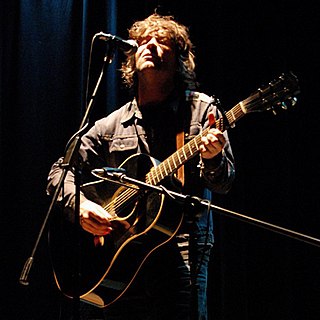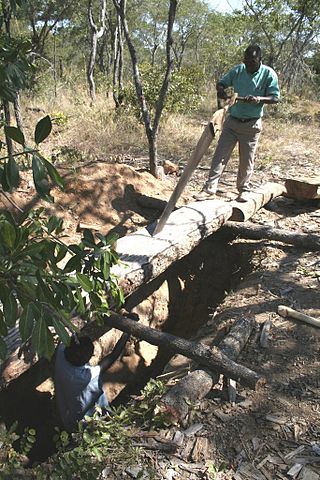A saw is a tool consisting of a tough blade, wire, or chain with a hard toothed edge. It is used to cut through material, very often wood, though sometimes metal or stone. The cut is made by placing the toothed edge against the material and moving it back and forth, or continuously forward. This force may be applied by hand, or powered by steam, water, electricity or other power source. An abrasive saw has a powered circular blade designed to cut through metal or ceramic.

In woodworking, a rip-cut is a type of cut that severs or divides a piece of wood parallel to the grain. The other typical type of cut is a cross-cut, a cut perpendicular to the grain. Unlike cross-cutting, which shears the wood fibers, a rip saw works more like a series of chisels, lifting off small splinters of wood. The nature of the wood grain requires the shape of the saw teeth to be different thus the need for both rip saws and crosscut saws; however some circular saw blades are combination blades and can make both types of cuts. A rip cut is the fundamental type of cut made at a sawmill.

A sawmill or lumber mill is a facility where logs are cut into lumber. Modern sawmills use a motorized saw to cut logs lengthwise to make long pieces, and crosswise to length depending on standard or custom sizes. The "portable" sawmill is simple to operate. The log lies flat on a steel bed, and the motorized saw cuts the log horizontally along the length of the bed, by the operator manually pushing the saw. The most basic kind of sawmill consists of a chainsaw and a customized jig, with similar horizontal operation.

Daf also known as Dâyere and Riq is a Middle Eastern frame drum musical instrument, used in popular and classical music in South and Central Asia. It is also used in Afghanistan, Azerbaijan, Tajikistan, Iran, Uzbekistan, many regions of Georgia, Pakistan as well as in parts of India and Russian polar regions. It is also popular among Balkans, Bukharan Jews, Caucasians, Kurds, and Macedonians.

The flexatone or fleximetal is a modern percussion instrument consisting of a small flexible metal sheet suspended in a wire frame ending in a handle. Used in classic cartoons for its glissando effect, its sound is comparable to the musical saw.

A coping saw is a type of bow saw used to cut intricate external shapes and interior cut-outs in woodworking or carpentry. It is widely used to cut moldings to create coped rather than mitre joints. It is occasionally used to create fretwork though it is not able to match a fretsaw in intricacy of cut, particularly in thin materials. Coping saw blades are always thicker and much coarser cutting than typical fretsaw blades and many others of its family members. Coping saws can however cut slight bends in the work, allowing circles to be cut if used carefully.

A two-man saw is a saw designed for use by two sawyers. While some modern chainsaws are so large that they require two persons to control, two-man crosscut saws were primarily important when human power was used. Such a saw would typically be 1 to 4 m long, and sometimes up to 5 m, with a handle at each end. In some cases, such as when felling Giant Sequoias, sawblades could be brazed together end-to-end in order to create longer saws.

Alley Cats Strike is a Disney Channel Original Movie that premiered on March 18, 2000. Directed by Rod Daniel, it stars Kyle Schmid, Robert Ri'chard, and Kaley Cuoco.

Timothy E. Easton is an American guitarist and singer-songwriter playing rock and roll, folk and Americana music. His latest release, You Don't Really Know Me was released on August 27, 2021.
The 1979 UK Championship was a professional non-ranking snooker tournament that took place between 19 November and 1 December 1979 at the Guild Hall in Preston, England. This was the third edition of the UK Championship that would later become part of snooker's Triple Crown. The event was sponsored by Coral for the second year in a row.

In bowling, a strike means that all of the pins have been knocked down on the first ball roll of a frame. On a bowling scoresheet, a strike is marked by an "X".

A saw pit or sawpit is a pit over which timber is positioned to be sawed with a long two-handled saw, usually a whipsaw, by two people, one standing above the timber and the other below. It was used for producing sawn planks from tree trunks, which could then be cut down into boards, pales, posts, etc. Many towns, villages and country estates had their own saw pits. The greatest user of sawn timber in past centuries was the shipbuilding industry. After falling, without bark, in smaller and more standardized sizes, and not intended as primary members in shipbuilding, the term 'timber' is often replaced by the term 'lumber'.
A whipsaw strike is a strike by a trade union against only one or a few employers in an industry or a multi-employer association at a time. The strike is often of a short duration, and usually recurs during the labor dispute or contract negotiations—hence the name "whipsaw".
NLRB v. Truck Drivers Local 449, 353 U.S. 87 (1957), is an 8-0 decision by the Supreme Court of the United States in which the Court held that a temporary lockout by a multi-employer bargaining group threatened by a whipsaw strike was lawful under the National Labor Relations Act (NLRA), as amended by the Taft-Hartley Act.

A frame saw or sash saw is a type of saw which consists of a relatively narrow and flexible blade held under tension within a rectangular frame. They are used for cutting wood or stone. The blade is held perpendicular to the plane of the frame, so that the material being cut passes through the center of the frame. Frame saws for use with wood are rip saws operated as a hand saw or powered in a sawmill. Frame saws used for cutting stone were powered saws in stone mills.

A whipsaw or pitsaw was originally a type of saw used in a saw pit, and consisted of a narrow blade held rigid by a frame and called a frame saw or sash saw. This evolved into a straight, stiff blade without a frame, up to 14 feet long and with a handle at each end. The upper handle was called the tiller and the lower one the box, so called from its appearance and because it could be removed when the saw was taken out of one cut to be positioned in another. The whipsaw was used close to the felling site to reduce large logs to beams and planks.
In financial technical analysis, the know sure thing (KST) oscillator is a complex, smoothed price velocity indicator developed by Martin J. Pring.

Whipsaw is a 1935 American crime drama film directed by Sam Wood and starring Myrna Loy and Spencer Tracy. Written by Howard Emmett Rogers, based on a story by James Edward Grant, the film is about a government agent working undercover traveling across the country with an unsuspecting woman, hoping she will lead him to her gang of jewel thieves. The film was produced by Harry Rapf for Metro-Goldwyn-Mayer, and was released on December 18, 1935, in the United States.
The Armiesburg Covered Bridge was on the south side of Armiesburg, Indiana. The Long Truss with arch covered bridge structure was built by Henry Wolf in 1907 and destroyed by the Great Flood of 1913.












